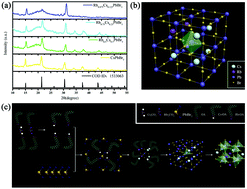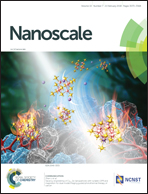Rb+ cations enable the change of luminescence properties in perovskite (RbxCs1−xPbBr3) quantum dots†
Abstract
All-inorganic metal halide perovskites of the formulation ABX3 (where A is Cs+, B is commonly Pb2+, and X is a halide, X = Cl, Br, I) have been studied intensively for their unique properties. Most of the current studies focus on halogen exchange to modify the luminescence band gap. Herein we demonstrate a new avenue for changing the band gap of halide perovskites by designing mixed-monovalent cation perovskite-based colloidal quantum dot materials. We have synthesized monodisperse colloidal quantum dots of all-inorganic rubidium–cesium lead halide perovskites (APbBr3, A = mixed monovalent cation systems Rb/Cs) using inexpensive commercial precursors. Through the compositional modulation, the band gap and emission spectra are readily tunable over the visible spectral range of 474–532 nm. The photoluminescence (PL) of RbxCs1−xPbBr3 nanocrystals is characterized with excellent (NTCS color standard) wide color gamut coverage, which is similar to the cesium lead halide perovskites (CsPbX3, X = mixed halide systems Cl/Br), and narrow emission line-widths of 27–34 nm. Furthermore, simulated lattice models and band structures are used to explain the band gap variations.

- This article is part of the themed collection: Editor’s Choice: Perovskite Nanomaterials and Devices


 Please wait while we load your content...
Please wait while we load your content...